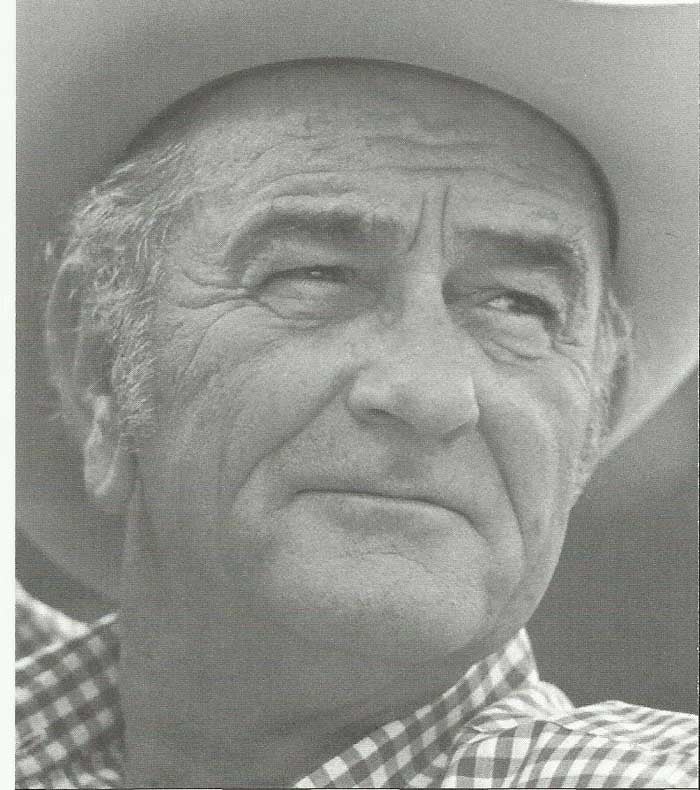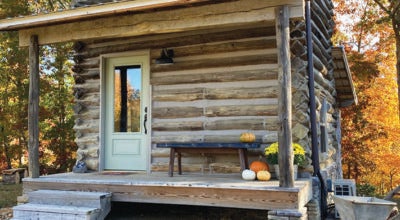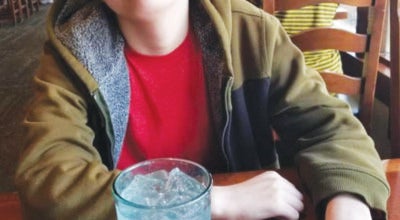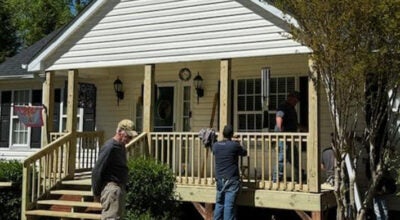Vietnam War ‘the undoing’ Of President Johnson
Published 9:53 am Thursday, September 28, 2017
By Betty Etchison
Cana/Pino Correspondent
Lyndon Baines Johnson, who was born in the country outside off Johnson City, Texas, in 1908, was a politicians’ politician. He served in the U.S. Congress for 24 years, 12 years in the House of Representatives and 12 years in the Senate. He served as the Minority Leader and then as Majority Leader in the Senate. He became an expert at political persuasion. He did that by learning all about the people who served with him. He found out about their back-grounds, interests, and needs. He was willing to do favors for legislators and he “called in” those favors when he needed a vote. “I took care of you; now I need your help.” Who could say no in that situation especially when a 6-4 tall Texan was looking down his nose at you? He was the ultimate arm-twister. He knew which arm to twist and when it should be twisted. Johnson kept all that information about the fellow members of Congress stored in his head, and he used it effectively, not only during the 24 years he served in that body, but also after he became President of the United States.
Lyndon Johnson was such a fixture in the Congress that one could almost think that he had spent his entire life there. He actually had a life before the Congress. He was born into a family that was short of money, but who had a fairly strong political background. One of his ancestors served as Governor of Kentucky, his grandfather served in the Texas State Legislature as did his father, a tough man who farmed the unforgiving Texas soil. Lyndon’s mother was a refined lady, who worked hard to see that Lyndon got the education and the social skills that he would need later in life; not that he always used the social skills that his mother tried so hard to instill.
After Lyndon graduated from high school in a class of six, his parents, particularly his mother, wanted him to go to college. Lyndon, who always seemed to be head-strong, had other plans. He and a friend got an old car and set out with California as their destination. They soon found that “all the gold in California is in the banks” was right and that gold was inaccessible to the Texas boys. Lyndon even worked awhile as a dishwasher. When he had enough California sunshine, he went back home and found work on a road building crew.
All that hard work convinced him that he probably should go to college. He enrolled in Southwest State Teachers College in San Marcos, Texas. While in college, he took time off to make a little money, which he needed to take care of personal debts. He got a job teaching elementary students in Cotulla, Texas. The students in that school were impoverished Mexican-Americans; many of whom came to school hungry. These students had to deal with racism which was associated with them being Hispanic. Lyndon went back to college after teaching a year or two and got his teaching degree in 1930. It is easy to see that Lyndon Johnson’s ideas about the needs of improvised people and people who suffered racial discrimination were born during his early teaching experience. Johnson taught in high school in Houston, Texas, for a year; and during that time, his interest in Democratic politics developed.
Lyndon Johnson campaigned for Richard M. Kleberg, the heir to the 860,000-acre King Ranch in Texas, when Kleberg ran for the U.S. House of Representative. Mr. Kleberg won the congressional seat, and he hired Johnson as his secretary. That was the beginning of Lyndon Johnson’s lifelong involvement in politics. Johnson strongly supported President Franklin D. Roosevelt and his New Deal programs. As the result of that support, Johnson was appointed director of the Texas National Youth Administration.
In 1934, Lyndon Johnson met a lady who he decided should be his wife. That lady was not so sure, but Lyndon used his persuasive tactics, and Claudia Alta Taylor, a member of a wealthy Texas family said “Yes” to his proposal. Claudia and Lyndon were married in 1934, and that was probably one of the best moves that Lyndon Johnson made because Claudia was his helper and loyal supporter the rest of his life. Claudia was called “Lady Bird.” That was a name given to her by a nurse when she was young and it stuck. Her husband often simply called her “Bird,” but the people of this country only knew her as Lady Bird. Lady Bird, a graduate of the University of Texas, was a smart lady and the money that she inherited plus the money that she made as a smart businesswoman helped finance some of her husband’s campaigns.
In 1936, Lyndon Johnson began his political career in earnest when he ran and was elected as a representative from Texas to a seat in the U.S. House of Representatives. His power began to be felt when as a member of the House Naval Affairs Committee, he got a naval training base for Corpus Christi, Texas. Johnson never forgot who sent him to Washington and he looked out for those folks when he could. Johnson’s time in the House was interrupted when he joined the U.S. Navy during World War II. He received a Silver Star for his service in the South Pacific.
Johnson had many high points in his political career, but he suffered lows along the way as in 1940 when he ran for the Senate and lost. He continued to serve as a member of the House of Representatives until 1948 when his fellow Texans elected him to the U.S. Senate. He became a leader in the Senate by focusing on military preparedness and the elimination of inefficiency and waste. His popularity and power increased until in 1954, he was chosen as the Senate Majority Leader – the top position.
His skill as a deal-maker continued to increase. He was able to get an increase in the minimum wage and got workers included who had not qualified before the passage of that bill. Johnson got that minimum wage bill passed even though it was opposed by the Republicans. If Lyndon Johnson believed in something, he would work to make it happen.
In 1960, Lyndon Johnson decided to seek the office of President of the United States, but the appeal of John Kennedy’s youthful idealism and his speech-making skills took the day. Johnson spoke up just before the Democratic Convention about his experience and qualifications but it was too late. John Kennedy was chosen as the Democratic candidate for president on the first ballot at the convention. Johnson was probably more surprised than anyone when Kennedy asked him to be his vice presidential running mate. Kennedy hoped that Johnson would strengthen the ticket in the South and the West where there seemed to be some “push back” because Kennedy was a Catholic and because he belonged to the wealthy, Harvard-educated part of the party. Richard Nixon was the Republican candidate in 1960. The Kennedy/Johnson ticket won the election but by a small margin. Lyndon Johnson moved into a position quite different from any he had held during the last 24 years. Many vice presidents complained that job involved a lot of attending funerals and ribbon-cuttings and not much else. Mr. Johnson was used to action, but he did what was asked to do even when it did not seem to be terribly important to him.
Then on Nov. 22, 1963, that all changed when an assassin’s bullet killed John F. Kennedy. A few hours after Mr. Kennedy’s death, Lyndon Baines Johnson, was sworn in as the 36th President of the United States on the airplane that would carry the body of the slain President back to Washington. Mr. Johnson’s wife, Lady Bird, and the late President’s wife, Jacqueline, who still wearing the suit which was stained by her husband’s blood, were among the witnesses.
It was then Lyndon Baines Johnson’s job to lead a nation which was grieving the loss of a popular leader. When President Johnson first spoke before a joint session of Congress he said, “All I have I would have given gladly not to be standing here today.” Even though the nation was mourning, the President realized that the work of the government had to still be done. He made it clear that the best way to honor the late President was to pass the bills which he had been pushing at the time of his death. One of those bills was the Civil Rights Act. According to The President Fact Book, Mr. Johnson said, “No memorial or eulogy could more eloquently honor President Kennedy’s memory than the earliest possible passage of the civil rights bill for which he fought so long.”
The Civil Rights Bill was passed. It outlawed all forms of discrimination on the basis of race, religion, or ethnic origin, and it extended to employment, education, housing and public accommodation, such as travel, lodging, food, and services, as well as space on buses, trains, and airplanes. Mr. Johnson also fought for a tax-cut bill which it was believed would increase consumer spending and thus create more jobs.
When Mr. Kennedy was assassinated he had served almost three years of his four year term. The next year was an election year again, and Mr. Johnson ran for President with Mr. Hubert Humphrey running with him as vice president. The Johnson/Humphrey ticket was elected by a landslide. President Johnson’s program for the country was called the Great Society. He announced plans for his program before the election. He stated that America’s wealth should be used to erase poverty in the country. He also began to escalate American’s involvement in the Vietnam War, which was the action that would finally do him in.
Mr. Johnson declared “War on Poverty” as a part of his Great Society program. He was no doubt remembering those poor children in Cotulla, Texas, that he had taught so long ago. He was probably also remembering his on childhood when money was a scarce commodity.
As a part of his plan for a Great Society the following acts or laws were passed: The Economic Opportunity Act of 1964, which established the Office of Economic Opportunity; the Elementary and Secondary Education Act, which helped provide special education for the handicapped and remedial help for slow learners; the act which would provide a Head Start program for pre-school children in low-income communities; and the Higher Education Act, which provided funding to help colleges and universities expand to meet the needs of their growing enrollment. Also an act was passed which set up both the Medicare and the Medicaid programs. Then there was the Voting Rights Act of 1965, which ensured the voting rights for all adults and authorized federal authorities to intervene in cases where discriminatory practices were suspected. Then the Fair Housing Act of 1968 was passed which barred landlords, sellers or real estate agents from refusing to rent or to sell a property because of a person’s race, ethnicity or religion as was the Model Cities Act which was to provide funds for job training, community centers, medical clinics, and other needs in the country’s most run-down urban areas. Then there was the Fair Labor Standards Act which raised the federal minimum wage. President Johnson even pushed through a bill which authorized the creation and funding of a National Foundation for the Arts and Humanities, which included the National Endowment for the Arts and American Ballet Theater. In 1967, he secured funding for the Corporation for Public Broadcasting and National Public Radio. About that same time the President signed the Water Quality Act and the Clean Air Act, which was the first major effect to lower the growing level of toxins in the environment.
The President was able to get an unbelievable number of domestic bills passed but trouble lay ahead. The Book, The President Fact Book says, “Along with the president’s announcement of the Great Society program in 1964, a second significant event occurred when he signed the Gulf of Tonkin Resolution, declaring that events in Southeast Asia were vital to international peace and security, and that the United States was prepared to ‘take all necessary steps, including the use of armed force,’ to deal with them.” In an effort to help the South Vietnamese defend themselves against the communists in North Vietnam, President Eisenhower sent about 1,000 advisors to Vietnam. During the Kennedy administration the number of advisors increased to 25,000. President Johnson increased the involvement after the Vietcong (Vietnamese communist) attack an American military base. By the end of that year, 460,000 U.S. troops were in Vietnam. Manpower increased and all kinds of military aide increased, but success in defeating the Vietcong did not increase and American boys continued to die.
The country was divided. The Hawks thought there should be more aid, more bombing, and more combat missions; but there were also strong feelings developing against the war. There were protests in cities around the country, men were burning their draft cards, and there was a huge peace march to Washington in 1967. Some members of Congress began to speak out against the war. The American people began to feel that the government was not being truthful concerning the war. Casualties mounted and nothing Mr. Johnson did seemed to help – not more troops, more equipment, nothing. The protests went on outside the White House sometimes night and day. The President’s lack of ability to make things happen in Vietnam, actually the inability to win that war no matter what he did, and the division within the country was too much for the President to withstand. Even though Mr. Johnson had done so much in American with his Great Society program, the fact that he could not win the war in Vietnam resulted in Mr. Johnson surprising the country with this statement, “With America’s sons in the fields far away, with American’s future under challenge right here at home, and with our hopes and the world’s hopes in the balance every day, I do not believe that I should devote an hour or a day of my time to any personal partisan causes or to any duties other than the awesome duties of this office.” With that statement Lyndon Baines Johnson let the nation know that he had decided not to seek another term as President of the United States.
At the end of his term, Lyndon B. Johnson and his wife, Lady Bird, went to their home on the bank of the Pedernales River, near Johnson City, Texas. It would probably be safe to say that Mr. Johnson went back to Texas a broken man.He had always been a man of action, and there was not enough action on his huge ranch to keep him happy. Friends would come to the ranch to visit. Mr. Johnson would get the visitors into his convertible, and he would drive them around the ranch at breakneck speed, scaring some of them half to death. Such activities were not enough; Lyndon Johnson missed being part of the government and getting things done to help the American people.
The former President of the United States, Lyndon Johnson, only lived about three years after he went back to Texas. He suffered a heart attack, his third, and died on Jan. 22, 1973. His body was flown to Washington and was carried through the Senate Chamber, where he had served for 12 years, to lay in state in the Capitol Rotunda for 24 hours. The casket was then moved out of the Capitol through the House Chamber, where he had also served for 12 years. A funeral service was held at the National City Christian Church, and then Lyndon Baines Johnson’s body was taken back to Texas and buried in the Johnson National Historic Park in Stonewall, Texas, with Rev. Billy Graham taking part in the graveside service.
When the presidents have been ranked by presidential historians, President Johnson is often ranked someplace in the top 10. He was a man who literally worked himself to death for his country. Many of the laws which govern our country today – laws, which seek to create equality for all citizens, were passed during the Johnson era.






